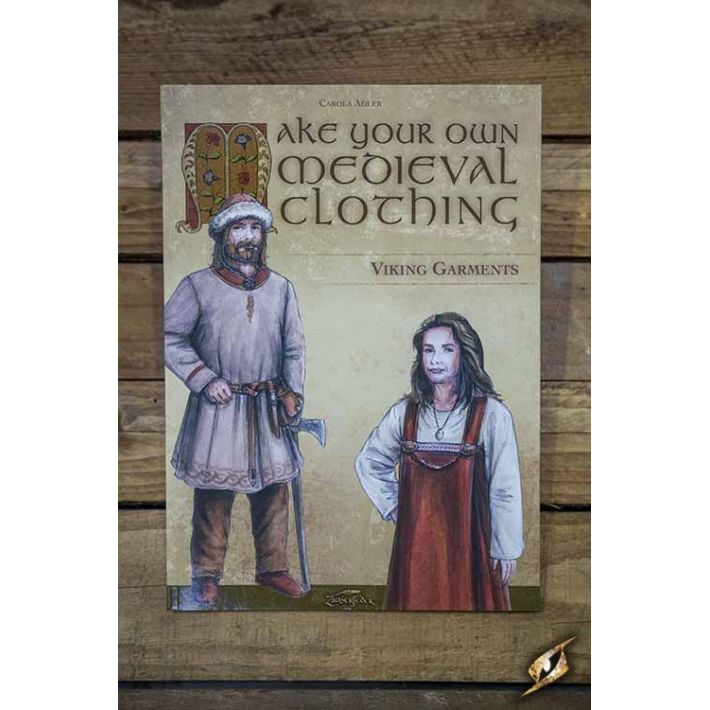




For those who prefer to make their own costuming, this is an instructional book for you. Learn how to make your own Viking clothing using the same techniques used by people who lived in the Middle Ages. Even a layman would know how to neaten fabric edges, attach sleeves and make cloth buttons or cords with metal points.
How to Make Your Own Medieval Clothing: Viking Garments is an instructional book written by Carola Adler. Learn how to make basic Viking clothing, from dresses to gaiters, shown in easy to follow steps. Whether you portray a hetman, craftsman, slave, seer or farmer’s wife, Viking Garments offers Viking re-enactors a handbook for the making of detailed clothing for various roles, time periods and regions. This book contains numerous basic patterns for men’s, women’s and children’s clothing in many possible combinations. Extensive additional information on materials and sewing techniques allows even sewing beginners with little experience to make sturdy clothing for winter and summer.
How to Make Your Own Medieval Clothing: Viking Garments is an instructional book written by Carola Adler. Learn how to make basic Viking clothing, from dresses to gaiters, shown in easy to follow steps. Whether you portray a hetman, craftsman, slave, seer or farmer’s wife, Viking Garments offers Viking re-enactors a handbook for the making of detailed clothing for various roles, time periods and regions. This book contains numerous basic patterns for men’s, women’s and children’s clothing in many possible combinations. Extensive additional information on materials and sewing techniques allows even sewing beginners with little experience to make sturdy clothing for winter and summer.
Natural leather products are very durable, but require regular maintenance with leather care products to stay flexible and to increase
It is best to start cleaning leather from the most delicate measures possible. Therefore, use a damp cloth with a little soap. If this is not enough - use a hard brush to remove dirt. Remove the soap with a separate damp cloth to wipe away any soap residue, and then use a dry cloth to wipe away the remaining water from the leather. Let it dry completely before the next maintenance step.
Always keep the leather maintenance after cleaning, because the soap will remove some of its natural oils. Apply mink oil, olive oil or professional lanolin-based fats to clean leather using a clean cloth, gently rubbing a small amount of fat with circular movements. Wait for the fat to soak in the leather, then use a clean cloth to clog the residue. For maintenance, you can also use beeswax by heating it to a liquid state and applying it to the leather. Remember that the leather so preserved will be harder and significantly darken what sometimes is the desired effect.
Your review appreciation cannot be sent
Report comment
Report sent
Your report cannot be sent
Write your review
Review sent
Your review cannot be sent

5 Elements - your larp shop. Medieval clothing - Viking garments.
5 Elements e-store - the best selection in Poland! Come and pick something for yourself.